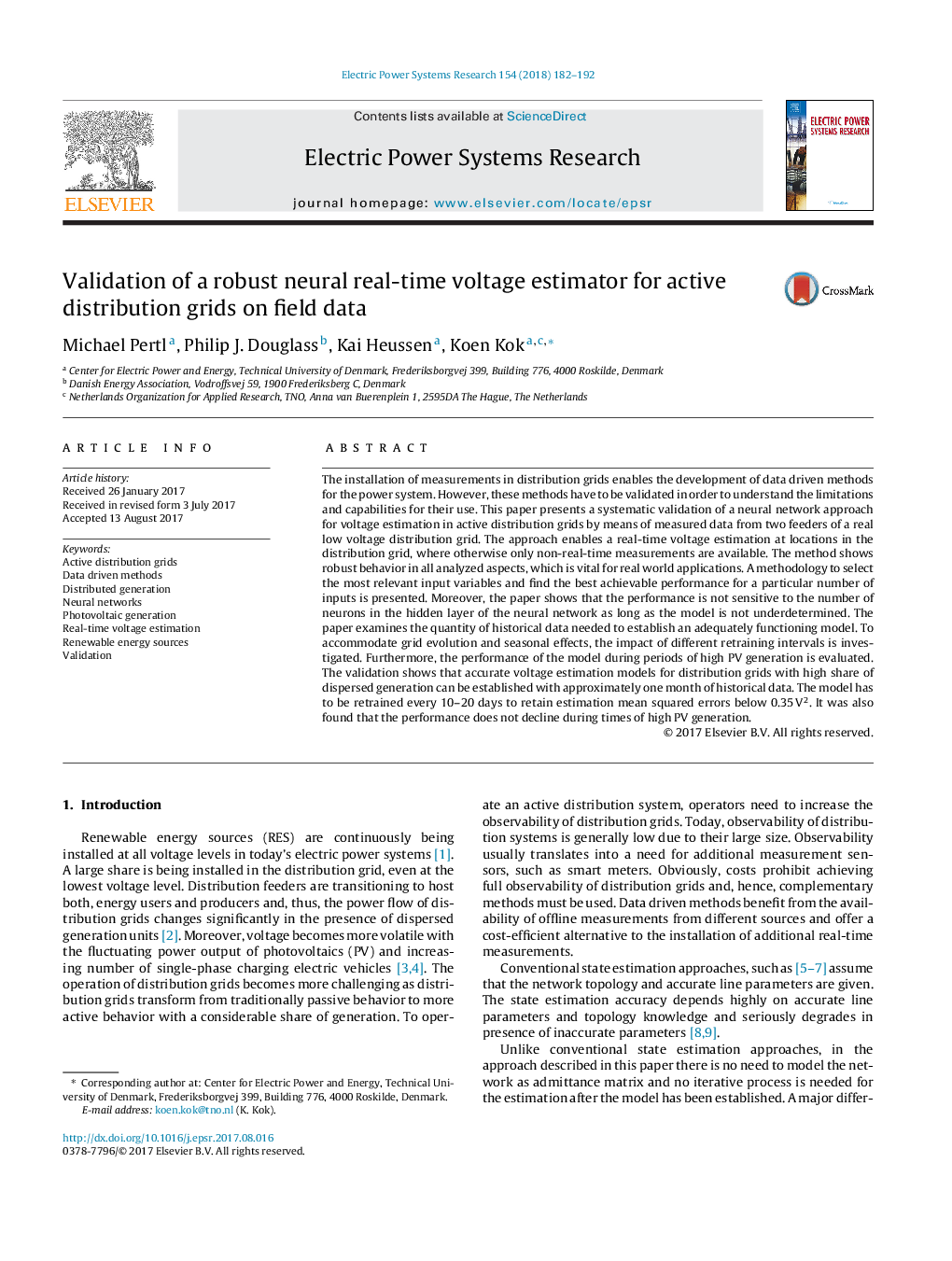| Article ID | Journal | Published Year | Pages | File Type |
|---|---|---|---|---|
| 5000890 | Electric Power Systems Research | 2018 | 11 Pages |
Abstract
The installation of measurements in distribution grids enables the development of data driven methods for the power system. However, these methods have to be validated in order to understand the limitations and capabilities for their use. This paper presents a systematic validation of a neural network approach for voltage estimation in active distribution grids by means of measured data from two feeders of a real low voltage distribution grid. The approach enables a real-time voltage estimation at locations in the distribution grid, where otherwise only non-real-time measurements are available. The method shows robust behavior in all analyzed aspects, which is vital for real world applications. A methodology to select the most relevant input variables and find the best achievable performance for a particular number of inputs is presented. Moreover, the paper shows that the performance is not sensitive to the number of neurons in the hidden layer of the neural network as long as the model is not underdetermined. The paper examines the quantity of historical data needed to establish an adequately functioning model. To accommodate grid evolution and seasonal effects, the impact of different retraining intervals is investigated. Furthermore, the performance of the model during periods of high PV generation is evaluated. The validation shows that accurate voltage estimation models for distribution grids with high share of dispersed generation can be established with approximately one month of historical data. The model has to be retrained every 10-20 days to retain estimation mean squared errors below 0.35Â V2. It was also found that the performance does not decline during times of high PV generation.
Keywords
Related Topics
Physical Sciences and Engineering
Energy
Energy Engineering and Power Technology
Authors
Michael Pertl, Philip J. Douglass, Kai Heussen, Koen Kok,
